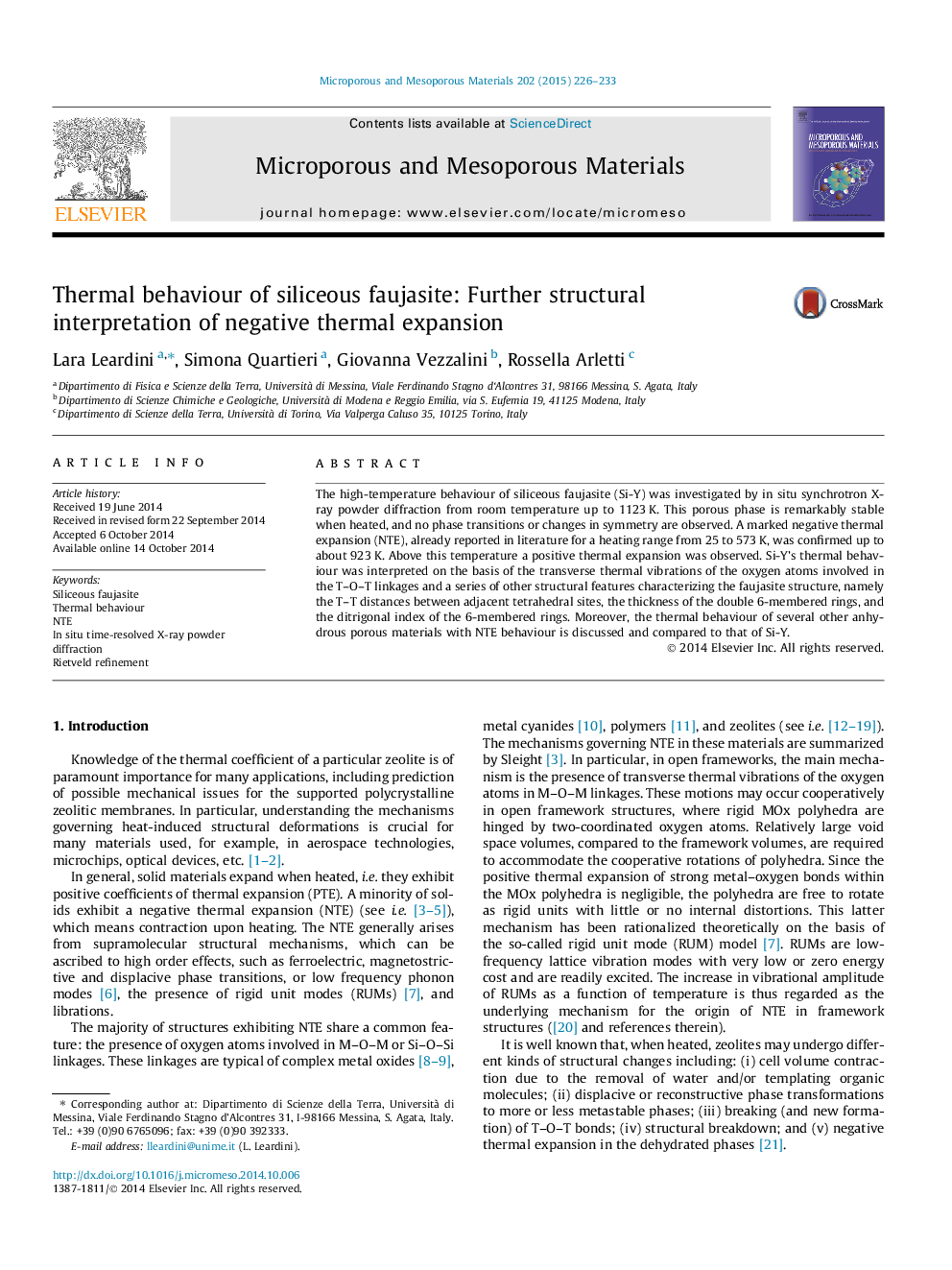| Article ID | Journal | Published Year | Pages | File Type |
|---|---|---|---|---|
| 72915 | Microporous and Mesoporous Materials | 2015 | 8 Pages |
•Si-Y thermal behaviour was studied between 298 and 1123 K by in situ synchrotron XRPD.•A strong negative thermal expansion is confirmed up to about 923 K.•Above 923 K, positive thermal expansion is observed.•The main structural changes undergone by Si-Y during heating involve the D6R units.
The high-temperature behaviour of siliceous faujasite (Si-Y) was investigated by in situ synchrotron X-ray powder diffraction from room temperature up to 1123 K. This porous phase is remarkably stable when heated, and no phase transitions or changes in symmetry are observed. A marked negative thermal expansion (NTE), already reported in literature for a heating range from 25 to 573 K, was confirmed up to about 923 K. Above this temperature a positive thermal expansion was observed. Si-Y’s thermal behaviour was interpreted on the basis of the transverse thermal vibrations of the oxygen atoms involved in the T–O–T linkages and a series of other structural features characterizing the faujasite structure, namely the T–T distances between adjacent tetrahedral sites, the thickness of the double 6-membered rings, and the ditrigonal index of the 6-membered rings. Moreover, the thermal behaviour of several other anhydrous porous materials with NTE behaviour is discussed and compared to that of Si-Y.
Graphical abstractFigure optionsDownload full-size imageDownload as PowerPoint slide
